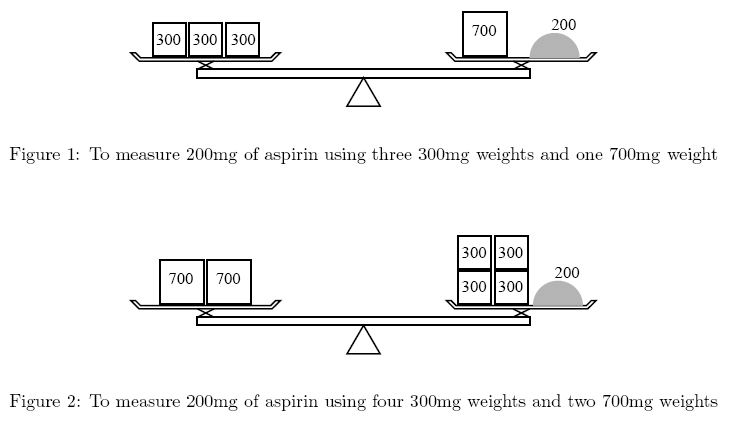Description

Input
Output
Sample Input
700 300 200 500 200 300 500 200 500 275 110 330 275 110 385 648 375 4002 3 1 10000 0 0 0
Sample Output
1 3 1 1 1 0 0 3 1 1 49 74 3333 1
#include<cstdio> #include<set> #include<map> #include<cstring> #include<algorithm> #include<queue> #include<iostream> #include<string> #include<cmath> #include<vector> using namespace std; typedef long long LL; /* a*x = b*y + d a*x + b*y = d |x|+|y| 的最小值 |x|+|y|==|x0+b/d*t|+|y0-a/d*t|,我们规定 a>b(如果 a<b,我们便交换 a b),从这个式子中, 我们可以轻易的发现:|x0+b/d*t|是单调递增的,|y0-a/d*t|是单调递减的,而由于我们规定了 a>b, 那么减的斜率边要大于增的斜率,于是整个函数减少的要比增加的快,但是由于绝对值的符号的作用, 最终函数还是递增的。 也就是说,函数是凹的,先减小,再增大。那么什么时候最小呢?很显然是 y0-a/d*t==0 的时候, 于是我们的最小值|x|+|y|也一定是在 t=y0*d/a附近了,只要在附近枚举几个值就能找到最优解了。 */ typedef long long LL; #define INF 0x3f3f3f3f LL ex_gcd(LL a,LL b,LL &x,LL &y) { if(b==0) { x = 1; y = 0; return a; } LL ans = ex_gcd(b,a%b,x,y); LL tmp = x; x = y; y = tmp - a/b*x; return ans; } void cal(LL a,LL b,LL c)//求ax+by==c 的一组|x|+|y| 最小的解 { bool f = false; if(a<b) { f = true; swap(a,b); } LL x=0,y=0; LL gcd = ex_gcd(a,b,x,y); x *= c/gcd; y *= c/gcd; LL t = y*gcd/a,ans=INF; LL kx,ky; for(LL i=t-1;i<=t+1;i++) { LL t1 = x + (b/gcd)*i; LL t2 = y - (a/gcd)*i; if( abs((long)t1)+abs((long)t2)<ans) { ans = abs((long)t1)+abs((long)t2); kx = (t1>0)?t1:-t1; ky = (t2>0)?t2:-t2; } } if(!f) printf("%lld %lld\n",kx,ky); else printf("%lld %lld\n",ky,kx); } int main() { LL a,b,c; while(scanf("%lld%lld%lld",&a,&b,&c),a+b+c) { cal(a,b,c); } }
原文:http://www.cnblogs.com/joeylee97/p/6661718.html